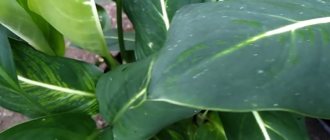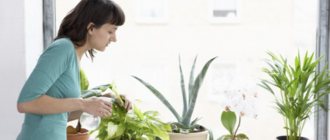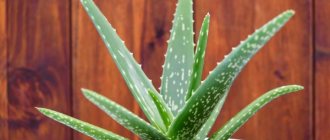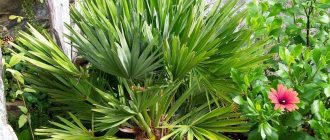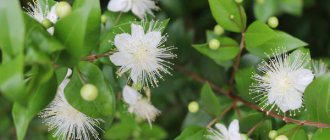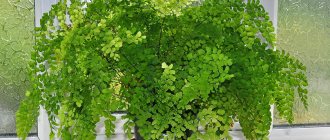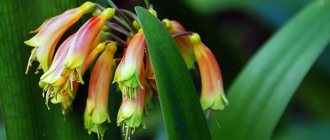- August 16, 2019
- Houseplants
- Ksenia Stepanishcheva
Fern is great for landscaping apartments and houses with insufficient lighting. This plant is considered shade-tolerant, so it can be placed on north-facing windows, in bathrooms, kitchens, and hallways. It also feels comfortable at high temperatures and humidity. How to care for ferns at home is described in the article.
Peculiarities
Ferns grow in different climates, in meadows, swamps, and forests. They can also be on trees, but most of them are found in the tropics. It is tropical species that are suitable for growing at home. There are also species that are frost-resistant. Gardeners willingly grow ferns in their garden plots.
All varieties of plants include 2 parts: roots and openwork, feathery, arched leaves, which are called fronds. Many ferns have pinnately dissected leaves, but there are species with solid leaves that differ in shape and size.
Plant reproduction occurs by spores, like fungi, mosses and algae. They are hardy in nature, but may not survive in the home even with quality care and the creation of suitable conditions. You can determine the cleanliness of the air by plants: if they are in a polluted atmosphere, the leaves wither.
Main problems when growing
As a rule, growing garden ferns is not difficult.
However, there are situations when a gardener notes the following:
- Spotting of shoots is a manifestation of rot, the development of which is associated with stagnation of water in the soil.
- Withering, yellowing and drying of leaves is due to too poor soil or an incorrectly selected place where the destructive rays of the open sun fall.
Thus, the garden fern will become an exquisite decoration of the garden plot with minimal care, which will not require enormous effort from the gardener.
Ferns can be found from coniferous forests to the tropics, in almost all natural and climatic zones. The garden fern is most often a native inhabitant of the same area where the garden plot is located.
This selection of crops allows you not to worry about acclimatizing plants and creating special conditions for them. In addition, ferns growing in Russia are no less decorative and attractive than tropical species, but they are much easier to care for.
Which garden ferns should you choose? Are there species in our forests worthy of decorating an alpine hill, flower bed or group planting of conifers?
Manifold
There are several types of indoor ferns that take root well at home:
- Maidenhair. This plant has thin, strong stems and graceful fronds. It prefers warmth, shade and moisture. It is advisable to grow this species in winter gardens and terrariums. Names: Radi, Delicate, Fine-haired, Venus hair.
- Asplenium. This type of indoor fern likes to be in the shade and in moist air. At home, several species are bred that are not similar to each other. These are Nesting and Bulbous, Viviparous.
- Nephrolepis. The plant needs space. The fronds are dissected, which ensures an original openwork effect. Nephrolepis sublime is commonly grown and is very easy to care for. Reproduction is carried out by dividing a large bush or by shoots.
- Blekhnum. The crown is 1 meter in diameter, and the rigid fronds are similar to a palm tree. Commonly grown blechnum humpback and brazilian.
- Davallia. The plant has thick rhizomes. That's why it is called hare's or squirrel's feet.
- Platycerium. The fern has large, showy leaves, like the antlers of a deer.
- Disconia. A mature plant can be 3 meters tall, so it is suitable for spacious rooms.
- Pelley. The plant prefers dry habitats. Pellea Roundifolia and Green are in demand.
- Polypodium. The leaves of the plant are heavily dissected.
Large plants look original in hanging pots and stands. Their feathery leaves are used to decorate bouquets. Torn fronds are quickly restored.
Appearance of indoor fern
Fern is a perennial plant with short but well-developed roots. Its colorful leaves - fronds - form sporangia at the base - this is where spores ripen. By the way, fern leaves are often used to decorate various flower bouquets and compositions. In this case, the leaves recover quite quickly.
The most popular types of fern are:
- cordifolia is an ampelous plant with picturesque even leaves about 0.5 m long, effectively hanging from a flowerpot
- tall - this is an indoor version of a fern that has straight, long leaves reaching a height of about 1 m
- neforolepis is a type of fern that is most popular due to its original leaf shape
Features of care
How to care for ferns at home? The plant needs regular watering and maintaining comfortable humidity. Almost all types of ferns are drought intolerant. Optimal temperature and lighting are important. It is necessary to properly transplant and propagate ferns. In the absence of competent maintenance, it dies.
If the plant is located near other house flowers, you should check that its openwork leaves are not squeezed. The fronds are fragile and need free space. Damaged and dry leaves should be removed in a timely manner, ensuring the free development of young shoots.
In the garden and aquarium
Some species can be grown in open ground and in water. We talked more about common types of ferns in a separate article.
Garden
Adiantum, Multirow, Ostrich, and Kochedyzhnik are suitable for growing in open ground.
These species are unpretentious and shade-tolerant. All care for these ferns comes down to watering, loosening and mulching the soil. They should be planted in a peat-sand mixture. The main condition is that the area should not be waterlogged or flooded with melt water.
Also, due to their winter hardiness , Bubblewort, Shieldwort, Osmunda and Bracken are suitable for the garden.
The garden species is replanted every three to four years.
Aquarium
Aquarium fish lovers are familiar with the varieties of ferns grown in aquariums. It is a real decoration of the reservoir and looks very impressive. The optimal temperature is 23-27 degrees.
If the water is colder, the leaves become small and lighten. Hard water also destroys it. Coarse sand or gravel is suitable for cultivation. They don't need feeding. Daughter shoots separate from the mother plant on their own and emerge. After this, they can be rooted again.
Aquatic ferns include Salvinia and Azola.
Watering
The plant loves water. Prolonged drought destroys it. How often should you water your fern? The procedures should be performed after the top of the soil has dried.
But excess moisture also negatively affects the root system and can lead to the death of the plant. If there is too much moisture, yellow and brown spots will appear on the leaves, the roots will rot, and the plant will dry out. Watering should be done several times a week with settled water at room temperature.
Temperature
How to care for a fern at home so that the plant does not die? It is necessary to ensure the optimal temperature. It is 15-22 degrees. But the specific regime is selected based on the type of plant.
Eat:
- Heat-loving. These include nephrolepis, asplenium, platycerium. In winter the temperature should be at least 18 degrees.
- Resistant to low temperatures. This is a polypodium, pimpulate, pellea. Plants can live at temperatures as low as 12 degrees.
Any type of fern does not need drafts, but they thrive in fresh air. The room where the flower is located should be regularly ventilated.
Living conditions
- Location. Despite the fact that in nature the fern is a forest dweller, a too dark, poorly lit place in the house will not suit it. It is best if this is a place near the window, where the plant will be under bright but diffused rays. Also, do not forget that in adulthood, a fern is a plant of quite impressive size, so if you have a young plant on a windowsill, then over time you should think about a stand for it, which is ideally placed near a window or between windows. In the summer, the fern will grow with pleasure and feel just great outside.
- Temperature. The optimal temperature for ferns in summer is the usual room temperature of 20-25 degrees Celsius. In winter, the plant reacts quite normally to its decrease, but you should not be zealous: the temperature should not drop below 12-13 degrees Celsius.
- Humidity. The plant will definitely show by its appearance if the air in the room is too dry - the fern does not like this. Therefore, it is very important to regularly irrigate the plant, this is especially important in the winter, when the room is heated by various heating devices and the air becomes very dry. By the way, during this period it is better to remove the flowerpot with fern away from heating sources, and, if possible, use a humidifier in the room. Irrigation can either be alternated with watering or combined with it.
- Fresh air. The fern is very sensitive to the presence of various impurities in the air in the form of gas, smoke - the presence of such will certainly affect the appearance of the fern and often leads to its death.
Soil preparation
The soil for indoor ferns should be loose, allowing air and water to pass through. Stagnant moisture causes root rot. It is desirable that the soil contains a lot of rotted leaves and a little less pine needles and peat.
Ferns need soil with slightly increased acidity (pH is 5.0-6.6). The parameter is easily established using litmus paper. Soil (2 g) must be mixed with distilled water (10 ml). Shake the mixture and let it sit for a while. Then you need to lower litmus paper into the liquid above the sediment. At pH = 5 it will be yellow, and at 6 it will be greenish-yellow.
Fertilizer
Feeding the fern is not necessary, since it feels fine without it. If they become pale and small, this indicates a lack of nutrients in the soil.
The plant needs feeding during the period of active growth - late spring and summer. It is advisable to fertilize using liquid complex mineral compositions, for example a solution, 1 liter of which includes:
- potassium salt – 1 g;
- superphosphate – 1.5 g;
- ammonium nitrate – 1.5 g.
You need to use organic matter with caution, as it can cause burns. Some gardeners periodically add tea leaves to the pot or water with a weakly infused drink.
Distinctive characteristics
There are a huge number of ferns in nature - more than 10,000 species. Despite the differences in size, structure, and life cycles, due to the characteristic features of their appearance, they are all called “ferns” (Polypodiophyta).
They exist in two life forms: herbaceous and woody. Representatives of the latter are found only in tropical conditions. Temperate ferns are herbaceous perennials with leaf blades ranging from 5 to 200 cm in length.
Their active growth begins later than other plants - the soil must warm up to +10 °C. At this time, leaves appear, twisted in the shape of a snail, which gradually unwinds from bottom to top. The leaf is characterized by apical growth, so its length can reach large values. Size and shape are determined by species. In most species, the stem is shortened and represents a rhizome.
On the underside of the plate, sporangia are formed in mid-June, where spores mature and begin to disperse in August. Collecting them is simple - in July or August the leaf is wrapped in paper, and after a few days the spores spill out (they look like dark dust). Ferns do not flower because they are spore-bearing. In autumn, the leaf turns yellow and dies, but in the male shield, for example, it remains green.
Decorative ferns are conventionally divided into the group of indoor (house), garden, and water ferns.
Features of transplantation
This plant is fast-growing, so it needs to be replanted annually when young. And adult species - every 2-3 years. The procedure is performed in the spring.
How to plant indoor ferns? To avoid harming the plant, you need a large pot. Indoor ferns are transplanted using the transshipment method. During this procedure, you should not dig the base of the rosette of leaves into the ground.
It is not necessary to clear the soil from the roots of the flower to prevent damage to the fragile roots. An exception is a disease of an indoor flower, in which it is necessary to identify damaged roots and remove them.
For replanting, you should purchase a soil substrate with an acidic environment or prepare the soil yourself. To do this you will need:
- land - 1 part;
- humus – 1;
- peat – 1;
- bone meal - ½ part.
Timely replanting ensures normal development of the plant. It must be done carefully and without haste.
We prepare the soil ourselves: what components are needed and what does the plant like?
If you prepare the land yourself for planting and replanting, you can use several methods.
- Method 1. You need to add leaf soil, humus, pine needles and small pieces of bark (1:1:1:1) to the prepared soil for succulents.
- Method 2. Take leaf soil, expanded clay, turf, coarse sand and vermiculite in a ratio of 2:1:1:1:1.
- Method 3. Peat, humus, leaf soil (1:1:1) must be mixed well and add 1.5 parts of bone meal to the mixture.
Due to the preference of ferns for slightly acidic soil, it is not recommended to mix lime, ash, or chalk into it.
Find out more information about the types of ferns: adiantum, asplenium, blechnum, davallia, nephrolepis, pellea, platicerium, phlebodium, cirtomium.
Capacity
You need shallow, wide flower pots. Medium ones are fine to start with, but it is important that they are the right size for the root system. In a container that is too large, the plant often gets sick, and in a small container it stops developing.
As they grow, they will need to be transplanted into larger flower pots. It is important that the container is round, without curved edges, since during transplantation it will be easier to transfer the soil tuber.
To grow flowers, experts recommend using clay pots, which allow the roots to “breathe” and do not release components that are toxic to humans. You should not worry about external unaesthetics; the container will be covered with thick foliage. Clay pots are massive and stable, so they can hold a flower. Their disadvantage is that microbes and pathogenic fungi can enter the root system with air.
Useful video
Watch a video with useful tips on choosing soil depending on the conditions of the fern from an experienced gardener:
Fern is very popular among gardeners. But in order to grow it, you will need knowledge about the special soil for the green beauty, watering regime, fertilizing and replanting. By following simple rules for its care, you can admire this beautiful plant all year round.
Reproduction
How to grow fern at home? Plant propagation is carried out using:
- dividing the bush;
- dispute.
The second option is complex and time-consuming. Therefore, even professional flower growers rarely use it. The brown dots on the bottom of the leaf are spores that the plant uses to reproduce.
At home, ferns are propagated by division. For this you need young root rosettes. They should be separated carefully so as not to harm the plant. It is advisable to do the division on a cold, cloudy day.
How to care for a plant that was recently planted? It is imperative to provide suitable air humidity (about 70%) and abundant watering for 2 months. Dry air and soil in a pot can damage the fern.
Description of the plant
Pteris is a terrestrial plant with a superficial, creeping rhizome. There are short brown hairs on the soft root sheath. The plant has an underground stem that can be mistaken for an extension of the root. Leaves appear directly from the ground. In its natural environment, the bush can reach a height of 2.5 m. There are also creeping forms that are located vertically on rocks and rocky cliffs.
The plant produces dense clumps of green vegetation. The dissected leaves have a pinnate or palmate shape. They are located on long, dense petioles. The leaf blades are painted bright green. There are varieties with variegated leaves. The leaves are soft and leathery. The sori are located on the reverse side of the leaf and look like a continuous line located along the edge.
Difficulties
If the fern is not cared for properly, it will get sick. The following pests often appear:
- Nematode. Appears when watering with cold water and chlorine. The leaves will be yellow and dry. The only way to save it is to transplant it into a new pot, which is pre-treated with insecticides. But treatment is not always successful; sometimes the fern dies.
- Scale insects, thrips, aphids. They usually start on a fern that is located in a room where the air is too dry. Regular spraying and a warm shower can prevent damage to the flower. If pests still appear, the plant must be treated with insecticides.
Diseases and pests are not all the problems that gardeners face. Plants react sensitively to inappropriate conditions, which is why they become yellowed and dry. Ferns dry out due to:
- low or high temperature (more than 25 degrees);
- using cold water;
- watering with liquid containing a lot of chlorine;
- dry air, presence of heating devices near the flower;
- exposure to direct sunlight;
- growing in a cramped pot or lack of nutrients in the soil.
Therefore, it is important to provide suitable conditions for the plant. Even minor violations can cause these problems.
Causes of drying, shedding of leaves, how to save a fern
The main reasons for foliage drying out can be different.
Dry air
Most often, amateur flower growers encounter this phenomenon in the off-season, in spring and autumn, when the heating is turned on or has not yet been turned off.
Too high room temperatures, combined with dry air coming from the radiators, leads to gradual drying of the leaves, starting from their tips. Or brown spots appear, spreading throughout the entire leaf blade.
Incorrect watering mode
It is necessary to maintain constant humidity in the pot, without overwatering, but also without allowing the earthen clod to dry out frequently.
The appearance of pests
Frequent “guests” on this indoor beauty include the scale insect, which feeds on sap from the leaves and stems. The active activity of the pest leads to the gradual death of foliage.

